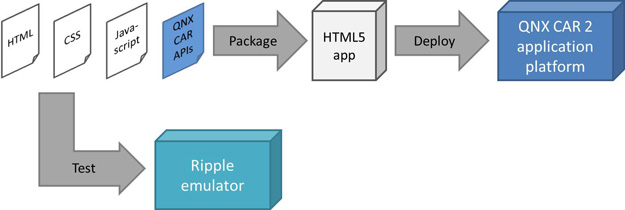If you read Jin Xu's post earlier this week, you are already up to speed on the EcoCAR 2 competition established by General Motors and the U.S. Department of Energy. If you didn't read it, here's the skinny: To drive home with first prize, university teams must reduce the environmental impact of a 2013 Chevy Malibu without compromising performance, safety, or consumer acceptability. If that sounds hard, it is. Which explains why, out of 150 university teams that applied to compete, only 15 made the grade.
Today, at SAE Convergence, I was lucky enough to meet two of the talented young people participating in this competition: Ahmed Uddin from Wayne State University and Andrew Palmer from Ohio State University. Ahmed and Andrew had just finished delivering remarks at the EcoCAR booth when they stopped to chat with me about their projects.
The Wayne State team dub themselves the Hybrid Warriors, and they are modifying the Malibu with a parallel-through-the-road PHEV. In a nutshell, the modified Malibu has two power trains, with an electric motor in back and a 2.4L engine in front. By taking this parallel approach, the team has actually upped performance, even though they replaced the stock engine with a power plant that cranks out less power, takes up less room, and puts out fewer emissions. Before these modifications, the car went from 0 to 60 in 9.5 seconds; now it takes only 8.9 seconds.
Meanwhile, the Ohio State team has opted for a series-parallel PHEV that uses an electric motor for the rear axle and a 1.8 L engine for the front. The systems can operate in charge-depleting, charge-sustaining series, and charge-sustaining parallel modes. Personally, I was fascinated by Andrew Palmer's description of the team's infotainment system (redesigning the center stack is an optional component of the EcoCAR 2 competition) and how they aim to make phone connectivity more seamless.
Cooler yet, the team is working on augmented reality, using a BlackBerry PlayBook. Picture this: You hold a PlayBook over the engine of your car, and the screen overlays a transparent view of the engine. The possibilities for this kind of functionality are enormous, and I invite you to check out two blog posts (here and here) from another Andrew — QNX's Andrew Poliak — for examples of how augmented reality could pimp your next ride.
Before you go, remember to follow @QNX_Auto on Twitter, where I will continue to tweet out reports from SAE Convergence.
Today, at SAE Convergence, I was lucky enough to meet two of the talented young people participating in this competition: Ahmed Uddin from Wayne State University and Andrew Palmer from Ohio State University. Ahmed and Andrew had just finished delivering remarks at the EcoCAR booth when they stopped to chat with me about their projects.
 |
| The EcoCAR 2 Chevy Malibu |
Meanwhile, the Ohio State team has opted for a series-parallel PHEV that uses an electric motor for the rear axle and a 1.8 L engine for the front. The systems can operate in charge-depleting, charge-sustaining series, and charge-sustaining parallel modes. Personally, I was fascinated by Andrew Palmer's description of the team's infotainment system (redesigning the center stack is an optional component of the EcoCAR 2 competition) and how they aim to make phone connectivity more seamless.
Cooler yet, the team is working on augmented reality, using a BlackBerry PlayBook. Picture this: You hold a PlayBook over the engine of your car, and the screen overlays a transparent view of the engine. The possibilities for this kind of functionality are enormous, and I invite you to check out two blog posts (here and here) from another Andrew — QNX's Andrew Poliak — for examples of how augmented reality could pimp your next ride.
Before you go, remember to follow @QNX_Auto on Twitter, where I will continue to tweet out reports from SAE Convergence.







